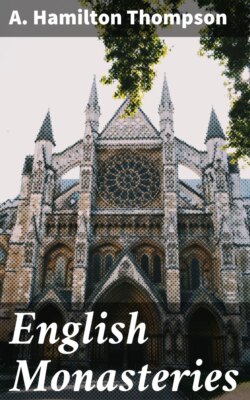Читать книгу English Monasteries - A. Hamilton Thompson - Страница 11
На сайте Литреса книга снята с продажи.
§ 8.
ОглавлениеTable of Contents
The Benedictine monasteries in England were colonised, or, where they were older than the conquest, received new blood from the monasteries of Normandy and France. We have seen that the rule of St. Benedict was made for a special monastery: the order was a collection of independent houses which found the rule suitable to their needs. Thus each of the larger English Benedictine monasteries was a separate community, under the jurisdiction of the diocesan bishop, from whose visitations some powerful abbeys, such as St. Albans, Evesham and Westminster, eventually obtained exemption. It was also subject to the visitation of two abbots, chosen annually by a general chapter of heads of English houses. The ruler of the monastery was the abbot: under him was his deputy, the prior, on whom a large part of the direct oversight of the house devolved. Where, as at Durham, the church of the monastery was also the cathedral of the diocese, the bishop was nominally abbot, but the actual ruler of the house was the prior; and to such houses the name of cathedral priory was given. The larger houses, however, frequently founded off-shoots on distant portions of their property, which were governed by priors appointed by the mother house, and were known as priories or cells. Although some of them became important houses, they were at first part and parcel of the mother house, and many continued to be so throughout the middle ages. Thus St. Martin's at Dover was a priory of Christ Church, Canterbury, and Tynemouth in Northumberland was a priory of St. Albans.
